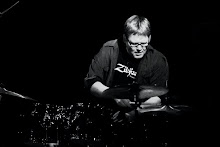Here's a quick transcription and audio example of the 3/4 pattern that the great unsung hero George Brown plays with Wes Montgomery on " Blues Riff" from the album Portrait of Wes.The Viennese waltz thing on the hi-hat on the and of one and beat 3 is what makes it a bit tricky. Despite this, it's a great way to work on this hi-hat pattern as, unlike Elvin Jones' use of this beat, the rest of the kit plays a four bar repeated part, at least for the head, although the rest of the drum performance is reasonably static, although you'll have to figure that out for yourself.
My apologies for the notation and the "natural font". I was having trouble with the new version (for me) of Sibelius. I'm hoping you'll find this has a certain "primitive charm"! No? Me neither!
I think it's important to reflect on two things in this example. One is how much static, repeated material the drums play in this performance. When I was younger I really thought "Jazz" drumming meant every bar had to be something different but as I matured I realized the power of hypnotic continuous grooves. Mr. Brown isn't playing what he's playing because he didn't have ideas, he's playing to lay a solid ground floor for the improvisations. Point two is that there are many.many great drummers that added to the music, some of whom are not well known. That doesn't mean what they did wasn't great. I feel bt discovering these many great player's contributions to the drumming collective, we gain a deeper understanding of our instrument. Don't just focus on the 6 people playing drum festivals, folks! Thanks!


No comments:
Post a Comment